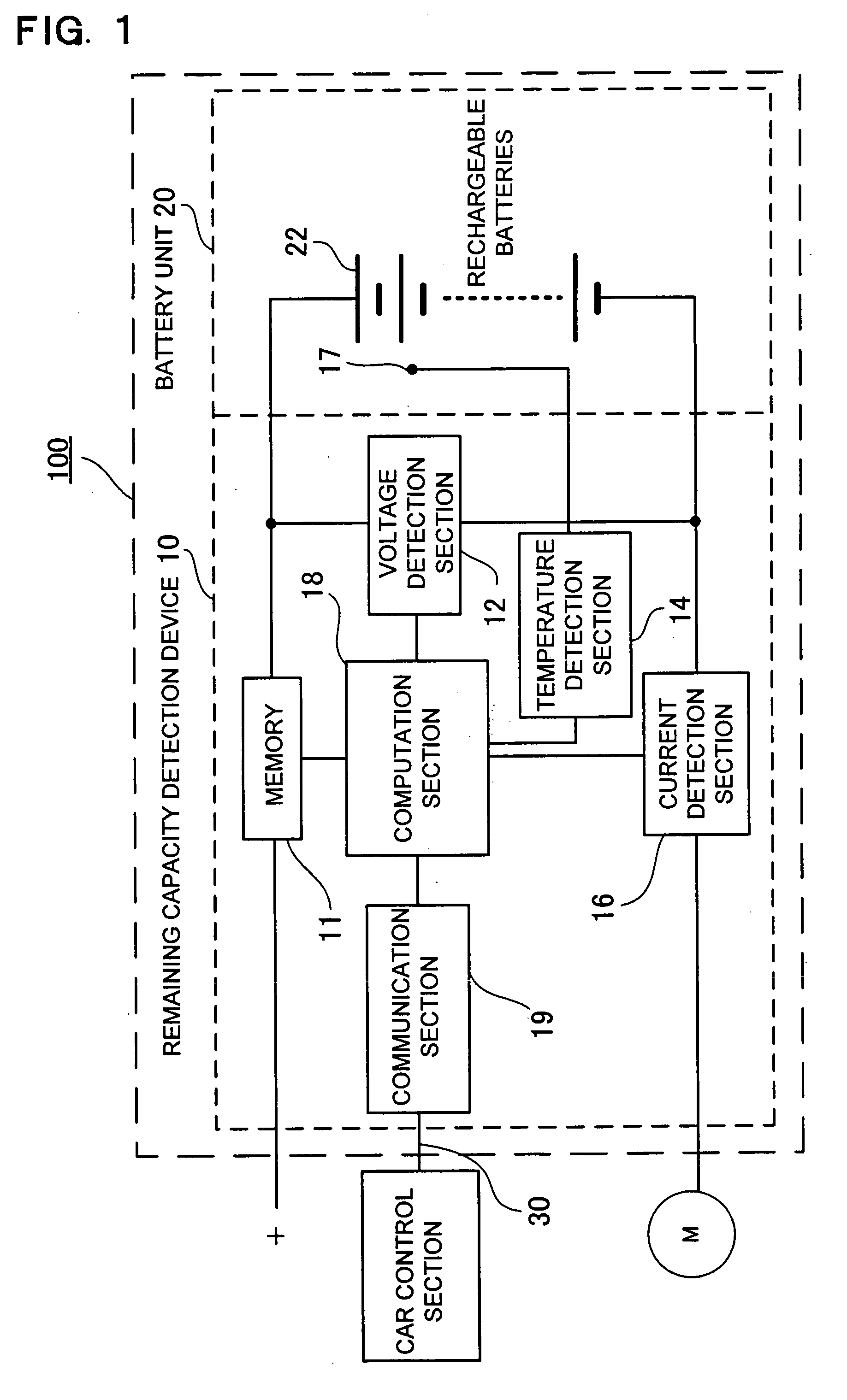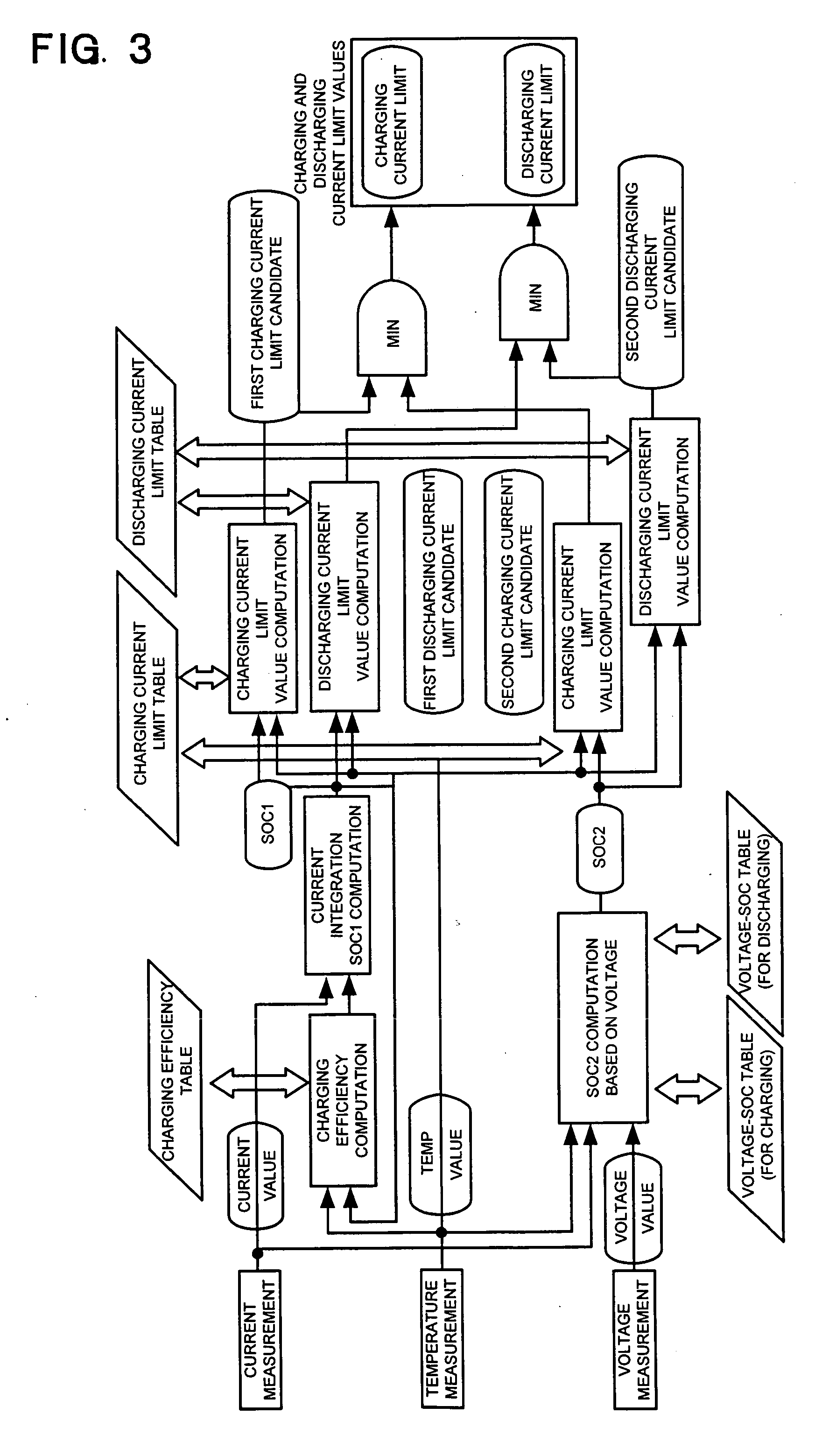Method of controlling battery current limiting
a current limitation and battery technology, applied in battery overheating protection, safety/protection circuits, transportation and packaging, etc., can solve the problems of easy degradation of battery characteristics, difficult repeated discharging to complete battery discharge or charging to a fully charged state, and increase in the error state of charge over time, so as to reduce battery degradation
- Summary
- Abstract
- Description
- Claims
- Application Information
AI Technical Summary
Benefits of technology
Problems solved by technology
Method used
Image
Examples
Embodiment Construction
[0020] Turning to FIG. 1, a block diagram showing the structure of one example of a power source apparatus used in an embodiment related to the method of controlling battery current limiting of the present invention is illustrated. The power source apparatus 100 of this figure is provided with a battery unit 20, which includes rechargeable batteries 22, and a remaining capacity detection device 10. The remaining capacity detection device 10 is provided with a voltage detection section 12 to detect battery voltage; a temperature detection section 14 to detect battery temperature; a current detection section 16 to detect battery current flow; a computation section 18 to operate on signals input from the voltage detection section 12, the temperature detection section 14, and the current detection section 16 and to determine the remaining capacity or state of charge of the battery and battery unit 20 maximum current limit values from the state of charge and battery temperature; and a co...
PUM
 Login to View More
Login to View More Abstract
Description
Claims
Application Information
 Login to View More
Login to View More - R&D
- Intellectual Property
- Life Sciences
- Materials
- Tech Scout
- Unparalleled Data Quality
- Higher Quality Content
- 60% Fewer Hallucinations
Browse by: Latest US Patents, China's latest patents, Technical Efficacy Thesaurus, Application Domain, Technology Topic, Popular Technical Reports.
© 2025 PatSnap. All rights reserved.Legal|Privacy policy|Modern Slavery Act Transparency Statement|Sitemap|About US| Contact US: help@patsnap.com



